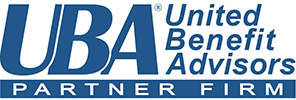 As an increasing number of Baby Boomers retire and leave the workforce, millennials are positioned to take on more leadership roles in the business world. Millennials bring with them a unique and evolving knowledge of technology and innovative HR practices that differ greatly from their Baby Boomer predecessors. As managerial roles are transferred from the Baby Boomer generation to millennials, forward-thinking businesses will create plans that adapt to the innovative processes and practices millennials bring to the table. Worthwhile risks and changes must be made to ensure companies keep up with their rapidly evolving competitors. To successfully transition millennials into top management positions, here are a few factors companies should keep in mind.
As an increasing number of Baby Boomers retire and leave the workforce, millennials are positioned to take on more leadership roles in the business world. Millennials bring with them a unique and evolving knowledge of technology and innovative HR practices that differ greatly from their Baby Boomer predecessors. As managerial roles are transferred from the Baby Boomer generation to millennials, forward-thinking businesses will create plans that adapt to the innovative processes and practices millennials bring to the table. Worthwhile risks and changes must be made to ensure companies keep up with their rapidly evolving competitors. To successfully transition millennials into top management positions, here are a few factors companies should keep in mind.
Millennials are technology-driven.
75% of millennials believe that technology helps them operate more efficiently in the workplace. Millennials are the first generation to truly incorporate technology as an imperative tool for maximum efficiency. Millennials look for efficiency, digital communication, and mobility founded in technology in the workplace, and use of technology helps facilitate innovation, engagement and clarity. Baby Boomers in management who are getting ready to hand over the reins to their younger counterparts can facilitate a smooth operational transition by embracing new systems and processes led by technology.
Efficiency is key.
Millennials have grown up in a fast-paced culture where new technologies are constantly being developed, and because of this they find it natural to lean on technology to efficiently tackle daily work tasks. As opposed to previous generations, millennials are used to instant gratification and desire work to be completed in the most practical and timely manner. One example of state-of-the-art technology is automated task management systems which allow you to complete work ahead of time. For example, social media scheduling platforms like Hootsuite allow you to schedule posts ahead of time and select when you want them to post automatically. The automation process creates a more efficient way to complete time-consuming, yet simple tasks. Another task management tool is Asana. Asana provides a single outlet for companies to manage projects, assign tasks and track progress, all through one system. Asana ensures a safe and organized portal for your company to complete tasks in the most practical manner. Invest time in researching technological tools your millennial employees find helpful in their day-to-day work, and start implementing them now.
Digital communication is here to stay.
Communication is vital to facilitating an engaged company culture. Being able to communicate well with not only clients, but with employees, is crucial. Millennials have grown up utilizing technology as a main form of communication, and they have mastered the art of making it work for them in the office as well. The mass amount of information that must be learned when implementing a new technology company-wide can be overwhelming, and keeping track of relevant news within your company can be difficult. To create an organized and effective internal communication strategy many companies are turning to social intranet software. This type of software creates a portal that keeps all of the company’s internal information in one place making mass communications easier to streamline. Digital communication fosters more efficient and timely transfer of information and problem solving. The impact of incorporating digital technology reaches beyond the office and can even help you prepare your employees to be social media advocates for your brand in their off time.
Mobility is the new norm.
One of the most attractive assets of technology is mobility. Technology has completely disrupted the workplace by allowing employees to work anywhere at any time. Employees no longer have to complete their typical workday in the office. Working from home or remote locations provides room for great work/life balance and creative inspiration. A prime example of an effective technology when it comes to remote work and flexible hours is video conferencing through apps like Skype or FaceTime. By incorporating video conferencing, companies can easily expand their client base country wide and even internationally, at a much more cost effective price.
As millennials continue to take over the workforce and we see more innovations and improvements made to current technology, be sure your company stays up to date on the latest trends. Ensuring your employees are engaged with and fluent in technologies that are being globally implemented is vital to your company’s success in this digital age.
By Nicole Federico

